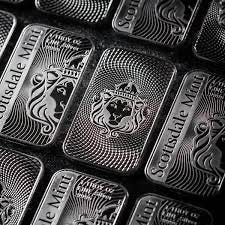Silver Price Must Trade Higher
My Take-away from the International Precious Metals Institute in Orlando
Recently I attended the International Precious Metals Institute conference in Orlando, Florida. This is the type of event that when you are in the industry feels a lot like speed dating. You have back-to-back appointments during the conference to take advantage of all the counterparties that attend from all over the world. But the sessions are also of equal value.
There are diverse sessions covering different facets of the precious metals markets. I must admit I try to attend as many as possible, but it is a delicate balancing act. Business development and market knowledge are the two factors that weigh on the decision-making process. Simply put, both have a weight in importance, one more measurable than the next, and so knowledge takes a back seat, and you often hope you can pick up what you missed from the transcripts later. However, when does that time ever avail itself?
This is why I make it a point to schedule around the topics that most concern me. Hence, I was able to attend the gold and silver session this year.
This session was moderated by Phillip Newman of Metals Focus with Phillip Baker former CEO of Hecla Mining presenting on the silver market. On the panel discussion they were also joined by Joe Cavatoni of the World Gold Council (WGC), Lee Hockey of Lee Hockey Consultancy and Keith Werner of Monetary Metals.
There were a few interesting tidbits that came up from their discussion. One of the more interesting take-aways for me is that the WGC is interested in the increased liquidity of the gold market. Joe mentioned several factors, and one is blockchain technology that can help on the road to continuing the growth of the market. So, gold, the oldest most resilient asset in the world, continues to find ways to grow its acceptance universally.
There were several comments about the liquidity of the gold and silver markets and some variables. Another factor brought up is the low price of manufactured gold in Dubai compared to the rest of the world. The need to turn gold around quickly was pointed to as a factor in this anomaly. I believe it is a function of the ease at which business is done in this market that allows a less regulated supply to come into play.
Albeit for me, the most interesting point brought up by Phillip Baker was about the price of silver. He pointed out that in 2011 silver traded as high as $35. Adjusted for inflation that silver price would represent currently around $48 an ounce. Taking this calculation into account this certainly points to the fact that silver is significantly undervalued meanwhile we are working on annual deficits. Yes, there are above ground stocks that keep the price depressed and there is no physical shortage of silver. But the wholesale printing of the United States dollar is of most importance in this valuation. Hence, my notepad calculation would say to me that basis a spot market price of $25 an ounce in 2011, silver should now be trading circa $34 an ounce.
Looking at gold’s range of the same year between $1565 and $1918 an ounce, that would put the current price range between $2120and $2610, and we are smack in the middle of that range at this moment. This means to me that we should see a tightening of the gold silver spread once again as people regain their confidence in the white metal.
What will happen, no one knows. But one thing I can say with certainty is that silver and gold demand are not abating. Silver in particular, has had fundamentally large increases in industrial demand due to the electrification of the world currently under way. Will silver break the $50 price again soon? I will say I am doubtful, but is it a good long-term investment? I believe so and I can tell you one thing with conviction, it is a better bet than United States dollar denominated bonds, or treasury notes.





